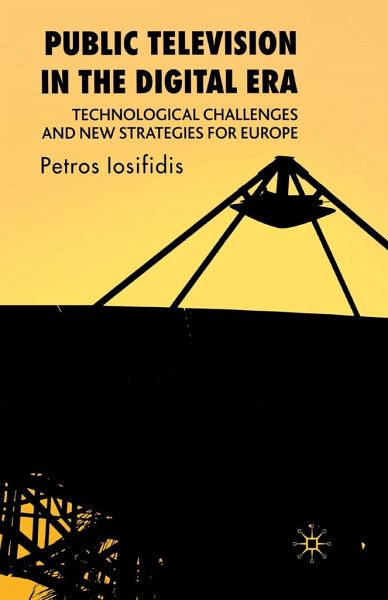
Public Television in the Digital Era
Technological Challenges and New Strategies for Europe
Versandkostenfrei!
Versandfertig in 6-10 Tagen
21,99 €
inkl. MwSt.
Weitere Ausgaben:

PAYBACK Punkte
11 °P sammeln!
By looking at a range of different European Public Television (PTV) broadcasters, this book investigates the challenges that these broadcasters encounter in a competitive digital broadcasting environment and reveals the different policies and strategies that they are adopting in order to remain accountable, competitive and efficient.














